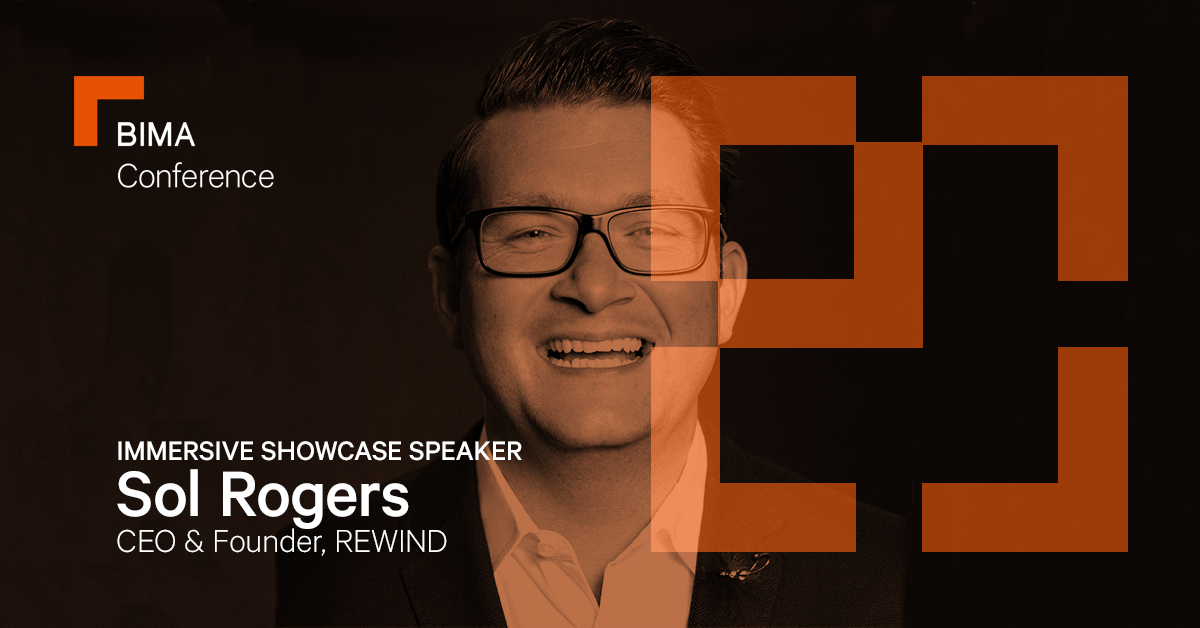
Ahead of his session in our Immersive Tech Showcase at BIMA’s inaugural conference, we gave Sol Roger’s, REWIND one minute to answer just a few questions about the conference and what we can look forward to hearing from him..
As VR, MR, and AR are becoming more accessible and reliable, these new technologies are being rapidly adopted across a whole range of industries. In the current climate of constant technological advancement and economic uncertainty, organisations need to find new ways to drive efficiency. Immersive technology is working – it is already revolutionising workflows and saving businesses money. It is also changing the way we communicate, collaborate and create.
I’ll be taking attendees through why these new technologies are future-proofing businesses and how they are being used to transform out-dated processes.
I believe the biggest opportunity for virtual reality is that it can solve problems that other mediums cannot. Presence – the feeling that you’re actually in the virtual world – is the magic of VR and it’s unique to the medium. Presence allows the user to suspend disbelief and believe they are in the virtual environment, reacting to stimuli as if they were in the real world. Because of this, the medium has the potential to make people think, feel, and even change their behaviour. VR is therefore very powerful and effective in a number of situations, from aiding recall after training to creating sensory brand experiences that evoke emotions.
For VR, the biggest threat is still audience adoption. For the market to grow, and for VR to prove its value to consumers, price-points need to adjust to consumer budgets. The Oculus Quest – a standalone headset which doesn’t need a phone or PC to power it – has done a fantastic job of reducing the barriers to entry, but there’s still a long way to go on price before everyone is spending time in VR each day.
Mixed reality (MR) promises to be a genuinely transformational technology. Put simply, it’s the future. The opportunity to decouple ourselves from our physical bounds will change how we exist in the world. MR allows us to write our own rules on how people see the world, and how they react to it. By marrying the physical and digital in unexpected ways, we can reinvigorate, stimulate and inspire.
The biggest threat to MR is the cost of entry. Devices are expensive and they are a barrier to adoption for smaller players who cannot be sure of the ROI at this early stage.
We’ve come a long way from the earlier days of VR when headsets were clunky and heavy, but the size and portability of headsets can still be improved. If a VR headset was small enough to fit in a pocket – while still being affordable and effective – it would transform the experience for users, resulting in an increase in adoption and frequency of use.
Jamie Bartlett is one of, if not the most, experienced think-tank employee in the UK. His opinions on society and technology are always thought-provoking, so I’m looking forward to his talk.